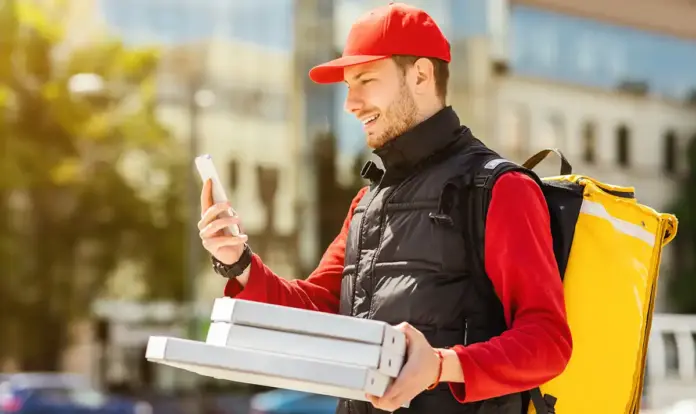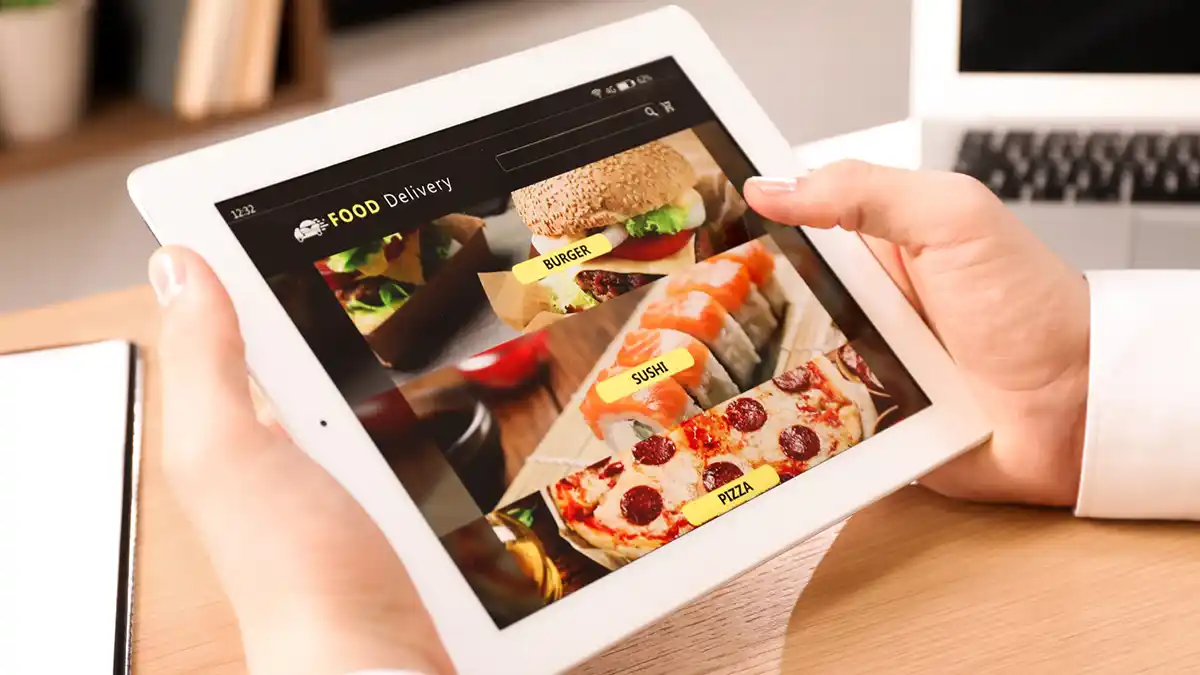
Online food delivery has been one of the hottest foodservice trends in recent years and is pegged at having a market value of over 150 billion dollars. The online food ordering industry has tripled since 2017, especially being fueled by the COVID-19 pandemic and the restrictions brought with it.
Online food delivery is set to grow further due to no signs of slowing customer demand and is slated to make up to 40% of restaurants’ revenue in 2023. Despite all the advantages of offering online food delivery to customers, the approach has its own set of pros and cons business owners should consider before offering food delivery service options to customers. We look at the various considerations before setting up a delivery option for your business and the benefits versus the shortcomings of this option.
How To Set Up Food Delivery Service For Your Restaurant
Since 2020, more restaurants have begun offering food delivery to customers to mitigate the losses brought about by the lockdowns. Food delivery services have helped several businesses remain afloat through the grim periods of the pandemic, and also allowed customers to eat from their favorite establishments while avoiding transmission risk. If you’re interested in setting up food delivery for your establishment, here are a few tips to consider:
Consider All Possible Delivery Options
While food delivery is often grouped under a single banner, the term represents an umbrella of options available to food business owners. The three main delivery options include:
- In-house Delivery: This option refers to restaurants delivering food with their drivers and delivery services as opposed to outsourcing it to a third party. This option involves some amount of work, expenses, and resources to set up. However, it allows you to retain customer data, and profits, and offers more control over delivery.
- Third-Party Delivery: Third-party deliveries are carried out by a dedicated company specializing in delivering food to customers. Think GrubHub or UberEats. While this option is very easy to set up and has marketing benefits tied into the deal, the margins are quite high, and can potentially eat into your profits. It also does not allow you much control over delivery and does not allow you access to customer data and order history.
- Hybrid Delivery: Many establishments split their online orders between both a third-party application and their own delivery service. This option can allow better profit retention while avoiding too many expenses when offering delivery. Hybrid models also involve taking orders from the third-party application but delivering the food using your own fleet.
Acquire the Necessary Restaurant Equipment
To offer delivery to customers, you will need top-notch restaurant equipment, so you must purchase the necessary restaurant equipment before you get started. Commercial refrigeration, cooking equipment, storage equipment, and packaging & delivery supplies are essentials if you’re looking to offer delivery.
Invest in Online Ordering Tech
Investing in an online ordering system will allow you to accept, track, and fulfill orders in time. While third-party applications allow you to do this, they might not integrate with your existing point-of-sale systems. Also, having your own system allows you the sole ownership of data and order history, allowing you to have more control over marketing and delivery.
Train Your Delivery Staff
You must chart and follow a foolproof delivery plan to ensure your establishment can fulfill customer orders on time. Map out routes, and brief your drivers on the protocol to be followed while on the job. Make arrangements for seamless communication to avoid confusion and ensure easy pickups and quick deliveries. It’s also important to train your delivery staff in customer service just as well as your front house staff to ensure they’re courteous when making deliveries.

Why Online Food Delivery is Popular
While food delivery has several advantages for both business owners and customers, we list some of the most important advantages for food service owners:
Convenience
Alongside the pandemic, customers have also begun considering convenience as the major factor when buying food. Online food ordering and delivery offers a major element of convenience as customers can enjoy a great meal from the comfort of their homes.
Healthier Food Options
Online food delivery also allows customers to purchase healthier options when ordering online. Assuring the freshness of food and quick delivery times can further enhance this aspect of online ordering for customers.
Contactless Delivery
Offering online food delivery allows you to provide contactless delivery – a safe and healthier option in times when the threat of the COVID-19 disease has still not abated. Online delivery mitigates transmission risk and allows customers that prefer eating at their homes a safe and viable option to eat good food.
Improved Brand Outreach
Offering online delivery enables your establishment’s name to reach formerly untapped customer pools. Existing customers also get to know your brand better when they’re able to order your food online. In case you use a third-party application for delivery, customers also associate the promptness of the third-party driver with your establishment’s professionalism, furthering brand outreach and impression.
Gain New Customers
Online food delivery allows businesses to be exposed to a larger market. This enables better engagement and provides greater opportunities for gaining more customers. The reach of online applications and ordering websites is also not as limited as a brick-and-mortar establishment’s, allowing wider prospects for business owners.
Online Food Delivery: The Cons
While online food delivery offers a large number of advantages to business owners, it also comes with several disadvantages that can make it less attractive if your business goals are not fully adaptable to these factors. The cons of online food delivery are:
Delayed Delivery
Offering delivery to your customers comes with the probability of deliveries being delayed due to several factors; be it a busy day in the kitchen, traffic, or vehicular issues. Delayed delivery, even if it is through a third party, can mean a loss of reputation for businesses, as customers associate mishaps directly with the establishment.
Requires Dedicated Effort & Resources
Implementing online delivery requires extra effort as you will need to prepare a dedicated delivery menu, purchase packaging material, invest in delivery services, and train staff. These can be time, money, and resource-intensive.
Lower Control
Since your customers won’t dine at the establishment, you will automatically have lower control over the dining experience. Other variables such as delivery times, food temperature at delivery, texture, and interactions of the customer with delivery agents also tend to be relatively out of your control.
Pricey for Customers
Though convenient, customers end up paying more for food delivered to them. As a business owner, you will be forced to charge customers a little extra for the packaging and the delivery itself. This might be a concern for customers who have issues with paying delivery charges.
Disconnect
Since there’s barely any interaction between you and the customer during online ordering and delivery, there’s a palpable disconnect. Food service establishments rely on making a good reputation in person, and this might be an alien and potentially unnerving concept for a few business owners new to online food delivery.
Conclusion
Whether you’re choosing to offer food delivery services to your customers via a third party, your own services, or through a hybrid model, be sure to back up your service with quality and training for your delivery staff. Optimize your menu for delivery and use high-quality packaging materials to ensure the food you prepare remains fresh at the time of delivery.

























